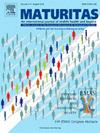Exploring the Relationships between Sex Hormones and Abdominal Muscle Area and Radiodensity in Postmenopausal Women: Insights from the Multi-Ethnic Study of Atherosclerosis
IF 3.9
2区 医学
Q2 GERIATRICS & GERONTOLOGY
引用次数: 0
Abstract
The relationships between sex hormone levels and muscle composition in postmenopausal women remain underexplored. To address this gap, we conducted a cross-sectional observational study utilizing data from the Multi-Ethnic Study of Atherosclerosis. Our analysis included 682 postmenopausal women aged 45–84 years with complete data, with a mean age of 63.3 years. Using abdominal computed tomography, we assessed abdominal muscle area (cm2) and muscle radiodensity (Hounsfield units) in relation to serum levels of testosterone (total and free), estradiol, and sex hormone binding globulin (SHBG), measured in nmol/L.
Multivariable linear regression models, adjusting for potential confounders, were employed to investigate these associations. In our fully adjusted models, higher levels of estradiol and free testosterone were found to be positively associated with total area of abdominal muscle (β = 1.41, 95 % CI 0.4, 2.4, p = 0.007 and β = 18.5, 95 % CI 4.0, 33.1, p = 0.004, respectively), but not with muscle radiodensity (p > 0.05). Conversely, elevated levels of SHBG were associated with a smaller total of area abdominal muscle and radiodensity (β = −2.1, 95 % CI -3.2, −0.9, p = 0.001 and β = −0.32, 95 % CI -0.6, −0.0, p = 0.07, respectively).
Our study highlights significant associations between sex hormone levels and skeletal muscle area in postmenopausal women. Furthermore, the novel findings regarding SHBG and muscle composition suggest a potential previously unrecognized role of SHBG in the accumulation of skeletal muscle adipose tissue. However, further validation in other cohorts is necessary to elucidate the potential role of SHBG in body composition.
Clinical Trial: NCT00005487.
探讨性激素与绝经后妇女腹肌面积和放射密度之间的关系:来自多民族动脉粥样硬化研究的见解。
性激素水平与绝经后妇女肌肉成分之间的关系仍未得到充分研究。为了解决这一差距,我们利用多民族动脉粥样硬化研究的数据进行了一项横断面观察性研究。我们的分析包括682名绝经后妇女,年龄45-84岁,数据完整,平均年龄63.3岁。使用腹部计算机断层扫描,我们评估了腹部肌肉面积(cm2)和肌肉放射密度(Hounsfield单位)与血清睾酮(总和游离)、雌二醇和性激素结合球蛋白(SHBG)水平(以nmol/L计)的关系。采用多变量线性回归模型,对潜在混杂因素进行调整,以调查这些关联。在我们的完全调整模型中,较高水平的雌二醇和游离睾酮与腹肌总面积呈正相关(β = 1.41, 95% CI 0.4, 2.4, p = 0.007; β = 18.5, 95% CI 4.0, 33.1, p = 0.004),但与肌肉放射密度无关(p < 0.05)。相反,SHBG水平升高与较小的腹肌总面积和放射密度相关(β = -2.1, 95% CI -3.2, -0.9, p = 0.001; β = -0.32, 95% CI -0.6, -0.0, p = 0.07)。我们的研究强调了性激素水平与绝经后妇女骨骼肌面积之间的显著关联。此外,关于SHBG和肌肉组成的新发现表明,SHBG在骨骼肌脂肪组织的积累中可能具有以前未被认识到的作用。然而,需要在其他队列中进一步验证,以阐明SHBG在体成分中的潜在作用。临床试验:NCT00005487。
本文章由计算机程序翻译,如有差异,请以英文原文为准。
求助全文
约1分钟内获得全文
求助全文
来源期刊

Maturitas
医学-妇产科学
CiteScore
9.10
自引率
2.00%
发文量
142
审稿时长
40 days
期刊介绍:
Maturitas is an international multidisciplinary peer reviewed scientific journal of midlife health and beyond publishing original research, reviews, consensus statements and guidelines, and mini-reviews. The journal provides a forum for all aspects of postreproductive health in both genders ranging from basic science to health and social care.
Topic areas include:• Aging• Alternative and Complementary medicines• Arthritis and Bone Health• Cancer• Cardiovascular Health• Cognitive and Physical Functioning• Epidemiology, health and social care• Gynecology/ Reproductive Endocrinology• Nutrition/ Obesity Diabetes/ Metabolic Syndrome• Menopause, Ovarian Aging• Mental Health• Pharmacology• Sexuality• Quality of Life
 求助内容:
求助内容: 应助结果提醒方式:
应助结果提醒方式:


